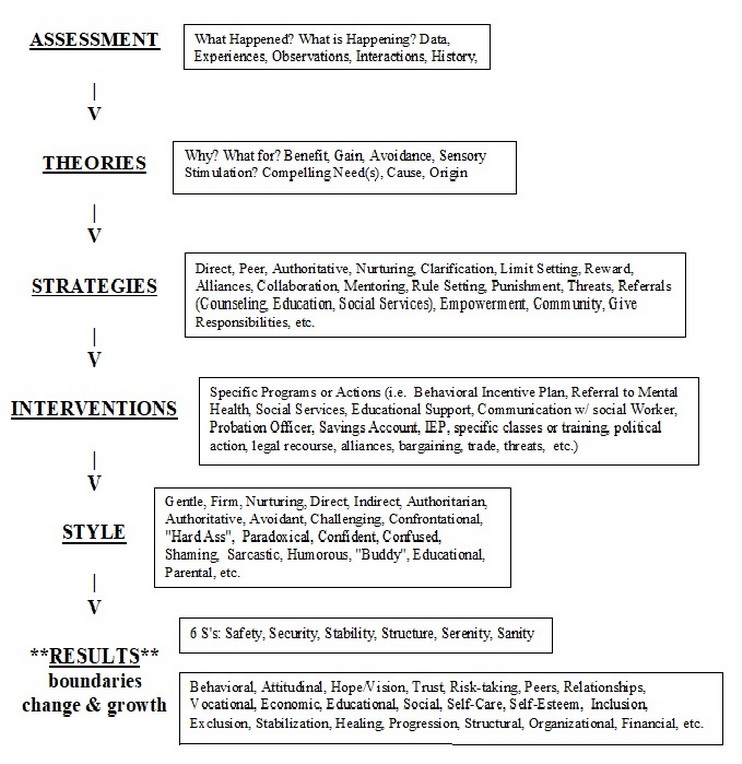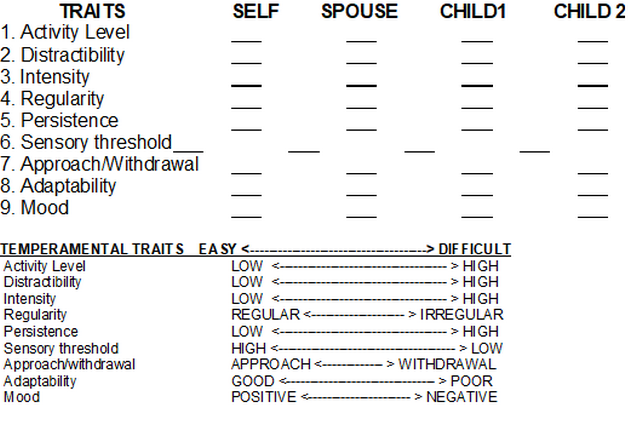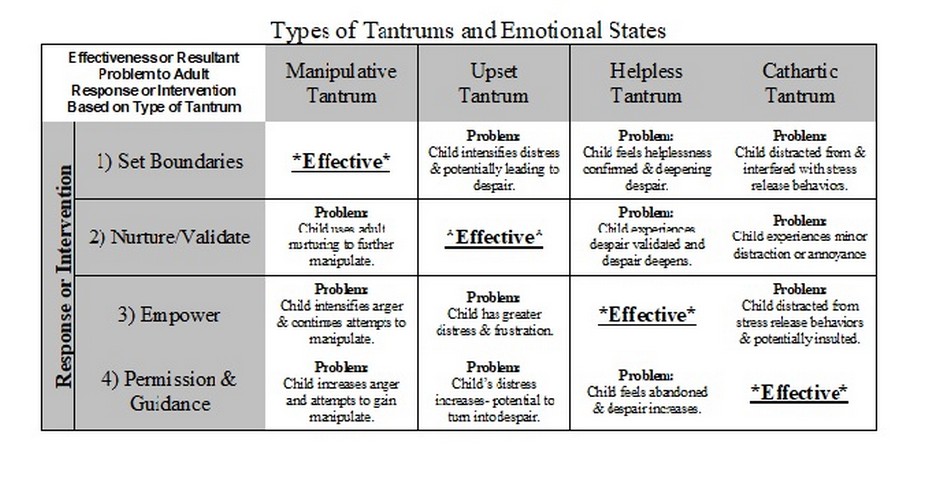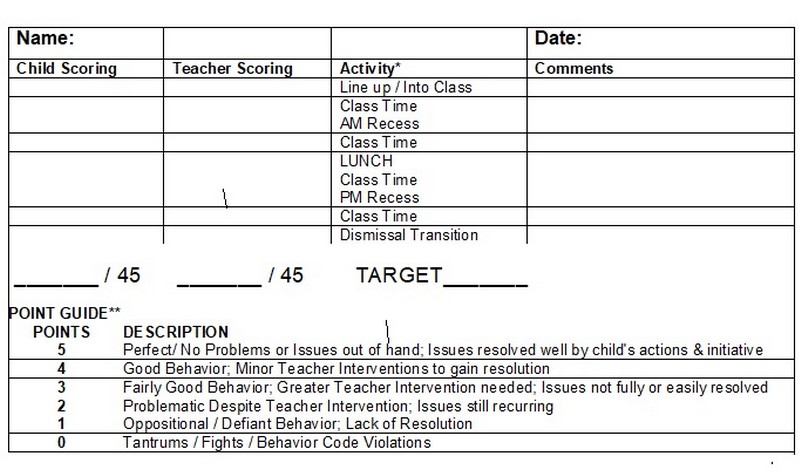Fix this Kid - RonaldMah
Ronald Mah, M.A., Ph.D.

Licensed Marriage & Family Therapist,
Consultant/Trainer/Author
Main menu:
Fix this Kid
Workshops-Consulting > Children's Behavior

Fix this Kid!

FORMAT:
Lecture and Discussion- Participants are encouraged to make the workshop more relevant to their concerns by asking questions.
DESCRIPTION: Teachers and other professionals are often asked to "Fix this kid!" Before any "fixing" and whether the kid needs any "fixing" in the first place, one needs to understand what is going on for the child. Five simple questions guide adults to understand how what appears as problematic behavior may be logical consequences of life situations and circumstances for the child. In other words, often a "difficult child" is responding normally to difficult life issues. From such revelations, adults can offer the support and intervention the child may require to give up problematic behaviors- that is, be "fixed!" Several tools for assessment are included in this extensive training.
Key question: Why do you pick a baby that is crying?
Is this a ____________ child?
Why Difficult Children Are "Difficult" (Examples)
1. Post Traumatic Stress Syndrome – refugee that had flashbacks during class time.2. Learning Disability – child with retrieval problem.Child with auditory or visual deceptive disability (missing social cues).3. Molested in early childhood – underlying rage.4. Abuse and neglected – testing availability of new caregivers; testing of anger response:abandonment, rejection, abuse.5. Fulfilling the IP role – mother who needed a disabled child.6. A.D.H.D. or A.D.D. child – "the far north pasture"7. The rebel or scapegoat in the alcoholic family system.8. Academic failures.9. Defying the step parent (new boy friend) in a newly blended family.10. Depression and anxiety.11. Cultural Issues12. Peer and gang influences.13. Drug and alcohol issues.14. Poor parenting (and the development of bullies).15. Other…
How and Why Punishment Works... and Doesn't Work
Strategy for Confronting Resistant Parents or Parents in Denial.
4 E’s and Data, Interpretations, Recommendations
Incentive Based Behavioral Modification Program for Oppositional Defiant Children
RIPS- RESPECT, IDENTITY, POWER & CONTROL, SECURITY

BUILDING SELF-ESTEEM IN THE ADULT-CHILD SYSTEM
With the 90 Second a Day Self-Esteem Prescription Plan
1) The role that Self-Esteem plays in our lives and society.Abusers, Victims, & Survivors- The Differential Outcomes of Ineffective to Effective Self-Esteem Building.2) Where Self-Esteem begins and Where and How it begins to be lost.The self-concept, behavior, environment and feedback endless loop.3) Acceptance, Power & Control, Moral Virtue, and Competence- The four cornerstones of Self-esteem.4) THE FOUNDATION: Seven fundamentals to building Self-Esteemin the Adult-Child System.
Know Yourself Being a Model of Self-Love Take Care of Yourself...First! Being Emotionally and Physically Available Separate Distinguish Love & Like Understand Your Child
5) THE BUILDING: Eight guidelines to Building Self-Esteem in Children.
Validate Your Child Teach Responsibility without Shame, Blame, & Fault Teach that not one should be allowed to abuse him/her (including you). Teach him/her to always take care of him/herself Challenge / Not Push; Have Expectations / Not Demands Praise Appropriately Create Internalized Motivation Do the Right Thing even when it's the Hard Thing
6) The Trap & the Message of being the Perfect Parent or Perfect Teacher.7) The 90 Second a Day Self-Esteem Prescription Plan
DIAGNOSTIC ORDER FOR UNDERSTANDING & APPROACHING DIFFICULT OR CONFLICTUAL BEHAVIOR
1) Developmental factors (including life cycle issues for adults)
CAUSE: development, age, maturationTREATMENT: satiation of developmental needsIMPLICATIONS/JUDGEMENTS: person is reacting normally to normal developmentTOLERANCE: high (if developmental stage is recognized)
2) Situational factors (other children/colleagues, availability of toys/resources)
CAUSE: situationTREATMENT: change the situationIMPLICATIONS/JUDGMENTS: person is reacting normally to the immediate situation only; the behavior is not something he/she does all the timeTOLERANCE: high
3) Physical condition
CAUSE: fatigue, hungerTREATMENT: treat condition- rest or feedIMPLICATIONS/JUDGMENTS: person is reacting normally to the condition; condition changes, then behavior changesTOLERANCE: high
4) Emotional condition (situational)
CAUSE: fear, anxiety, joy, sadness, griefTREATMENT: validate emotions, teach appropriate expressionIMPLICATIONS/JUDGMENTS: person is reacting normally; colleague or supervisor may have judgment about appropriateness of the feelingTOLERANCE: high (depends on own comfort w/expression of emotions)
*5)Temperamental factors
CAUSE: personalityTREATMENT: adjust for temperament/ socializeIMPLICATIONS/JUDGMENTS: person is reacting based on innate normal traits for him/herTOLERANCE: *high for temperament, *low for behavior
*6) Environmental/ecological factors (family, school, work systems)
CAUSE: family/school systems, turmoil, constraints- dysfunctionalityTREATMENT: alter system, change environmentIMPLICATIONS/JUDGMENTS: person is reacting normally to an adverse environment; victim of the environmentTOLERANCE: high- sympathetic (colleague/supervisor may have guilt)
*7) Pathology (psychological)
CAUSE: person's psychological problem/disorderTREATMENT: treat problem/disorder- "sick" patientIMPLICATIONS/JUDGMENTS: something is wrong with the personTOLERANCE: low to high?
**8) Morality
CAUSE: evil or rotten essenceTREATMENT: abandonment, punishment, damnation, or seeking of spiritual interventionIMPLICATIONS/JUDGMENTS: person is unsalvageable by another's activity or interventionTOLERANCE: none to ?
TEMPERAMENTAL TRAITS
1. Activity Level: How active generally is the child/person from an early age?2. Distractibility: How easily is the child/person distracted? Can s/he pay attention?3. Intensity: How loud is the child/person generally, whether happy or unhappy?4. Regularity: How predictable is the child/person in his/her patterns of sleep, appetite, bowel habits?5. Persistence: Does the child/person stay with something s/he likes? How persistent or stubborn is s/he when wants something?6. Sensory threshold: How does the child/person react to sensory stimuli: noise, bright lights, colors, smells, pain, warm weather, tastes, the texture and feel of clothes? Is s/he easily bothered? Is s/he easily over-stimulated?7. Approach/withdrawal: What is the child/person's initial response to newness- new places, people, foods, clothes?8. Adaptability: How does the child/person deal with transition and change?9. Mood: What is the child/person's basic mood? Do positive or negative reactions predominate?
*Important to note that high or low in any trait is not implicitly good or bad.
TEMPERAMENTAL EVALUATION & GOODNESS OF FIT EVALUATION TRAITS

FIVE ELEMENT PROGRAM
1) EVALUATION- defining the problem, study your child, family reactions.2) REGAINING ADULT AUTHORITY- think temperament and to deal with behavior instead of responding emotionally or instinctively to what you perceive as the child's motives. Learn to:disengage, to become neutral in attitude, to think and evaluate before responding, to understand behavior as it is related to temperament, to replace why is he doing this to me w/ how can I understand his behavior.3) MANAGEMENT TECHNIQUES- management is different from discipline. Labeling, cooling off, sense of timing, dealing with change, eye contact, choices, introducing gradually, understanding manipulative versus temperamental tantrums. Engage in self-monitoring and understanding your child.4) FAMILY GUIDANCE5) SUPPORT GROUPS
Book recommendation: The Difficult Child, Stanley Turecki, M.D., Bantam Books, New York, 1989. $9.95 in paperback.
Culture of Challenged Children
To serve self-esteem and to emotionally, psychologically, socially, and spiritually survive, challenged children often develop the following cultural beliefs, attitudes, values, and behaviors:
1. Try to be the same as others2. Hide or avoid their differences or difficulties (including emotional distress)3. Deny or minimize their differences or difficulties (including emotional distress)4. Work hard or harder than others5. Quit trying6. Compensate for differences, difficulties, or challenges
By recognizing unsuccessful activation/attempts from the first five strategies, adults can guide children to the sixth strategy, successful compensations.
TEMPER TANTRUMS!!
Understanding and Helping Children in Emotional Need with "The One-Minute Temper Tantrum Solution!"
INDULGE - NURTURE – SHAME - PUNISH - IGNORE – DISTRACT?

- Telling the Difference
DAILY BEHAVIOR REPORT

---------------------------------------------------------------------------------------------------------------------------------------------------------
*Teachers/Adults should adapt the Activity list to those that are relevant to the child's and classroom's (or household's) particular schedule.
** Note: This is strictly a BEHAVIOR guide. It is not intended to be about academics per se. The focus is feedback on behavior that would preclude academic, social, and emotional progress. In other words, a child can and should earn a score of 5 points, for example for good behavior even if he/she is performing poorly academically.
The child scores him/herself 0-5 on behavior for each time period. The teacher scores the child 0-5 on behavior for each time period after the child self-scores. The teacher can take a minute to do this for the entire morning at the lunch break, and for the afternoon at the end of the day. Any scoring differences should be used to TEACH and CLARIFY specific behavior expectations to the child. Comments help the adults (including parents) more precisely identify target behaviors or situations to address.
Based on an average score of 3 points (3 meaning fairly good behavior w/ significant teacher intervention), a total score of 27 out of 45 possible (3 x 9 activity periods) may be an initial and acceptable target goal. 36/45 would be very good (4 x 9), while 45/45 would be exceptional.
With success, the target goal score should be raised. Rewards (daily, weekly, monthly as appropriate to the child's experiential time frame) may be attached to the scores.
This is a daily behavior report. For some children, a weekly report may be more appropriate. The day is broken into parts to help identify both successful and unsuccessful periods of the day (as opposed to the whole day being described as a "bad day"). Fatigue, low blood sugar, subject matter (and potential learning style or disability issues), transition issues, structure vs. unstructured times, and other factors may be revealed if patterns of when unsuccessful periods are noted over several daily reports.
THE WORKING IT OUT PLAN
PART I: TELLINGS
First, one person speaks while the other person listens carefully without interrupting.
SAY: What I FELT.
What I WANTED.
What I LIKED or DIDN'T LIKE.
THEN SAY: What I think YOU FELT
What I think YOU WANTED
What I think YOU LIKE or DIDN'T LIKE
Now, the other person says the same things to you while you listen carefully.
PART II: HAPPENINGS
First, one person speaks while the other person listens carefully without interrupting.
SAY: What I DID when I was upset.
What I want to happen INSTEAD.
What I can do DIFFERENTLY or BETTER next time.
Now, the other person says the same things to you while you listen carefully.
PART III: CONTRACT AND CLOSE
TOGETHER decide
What WE can do differently or better.
PLAN for the next time.
CLOSE by shaking hands or hugging.

